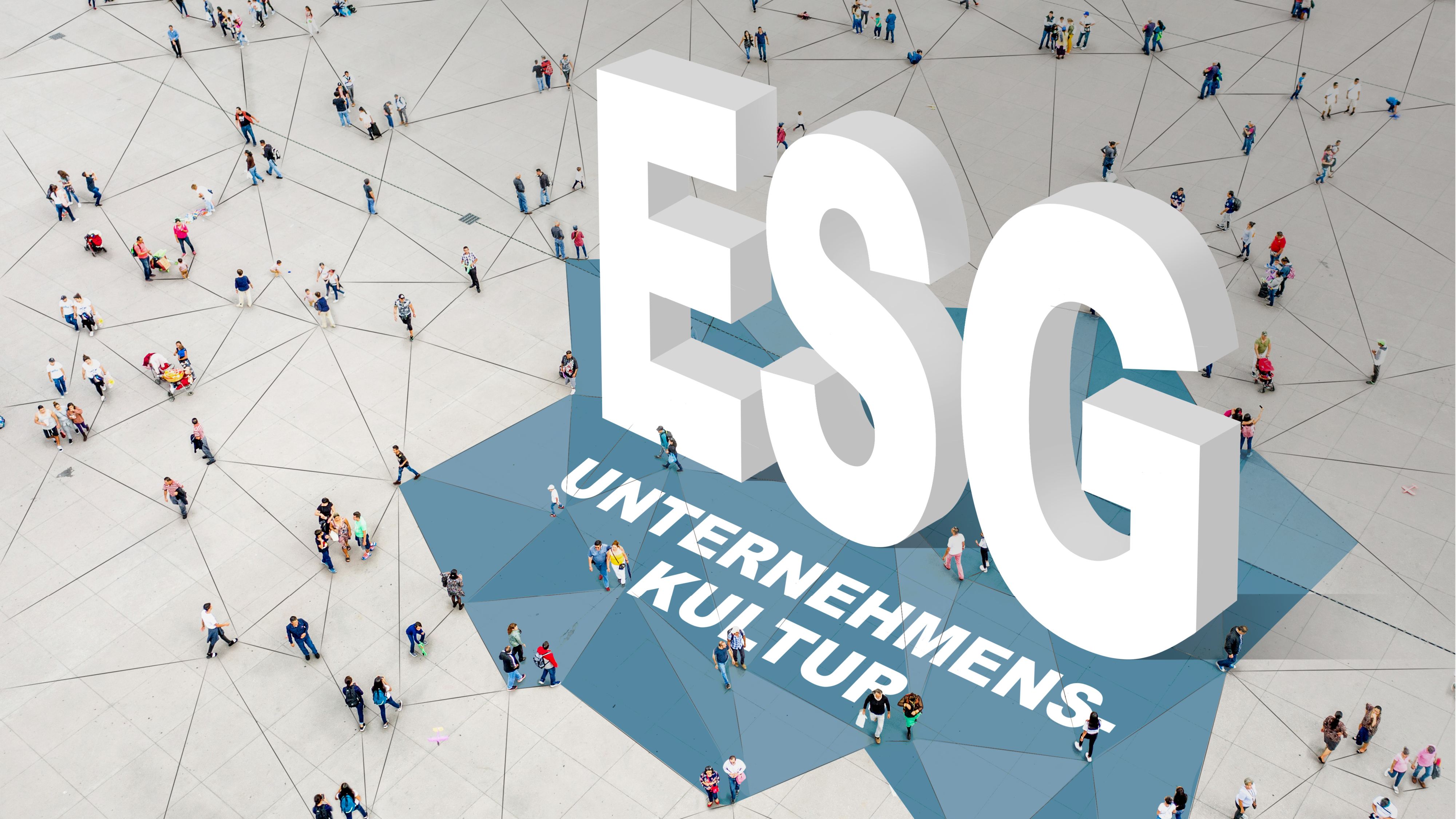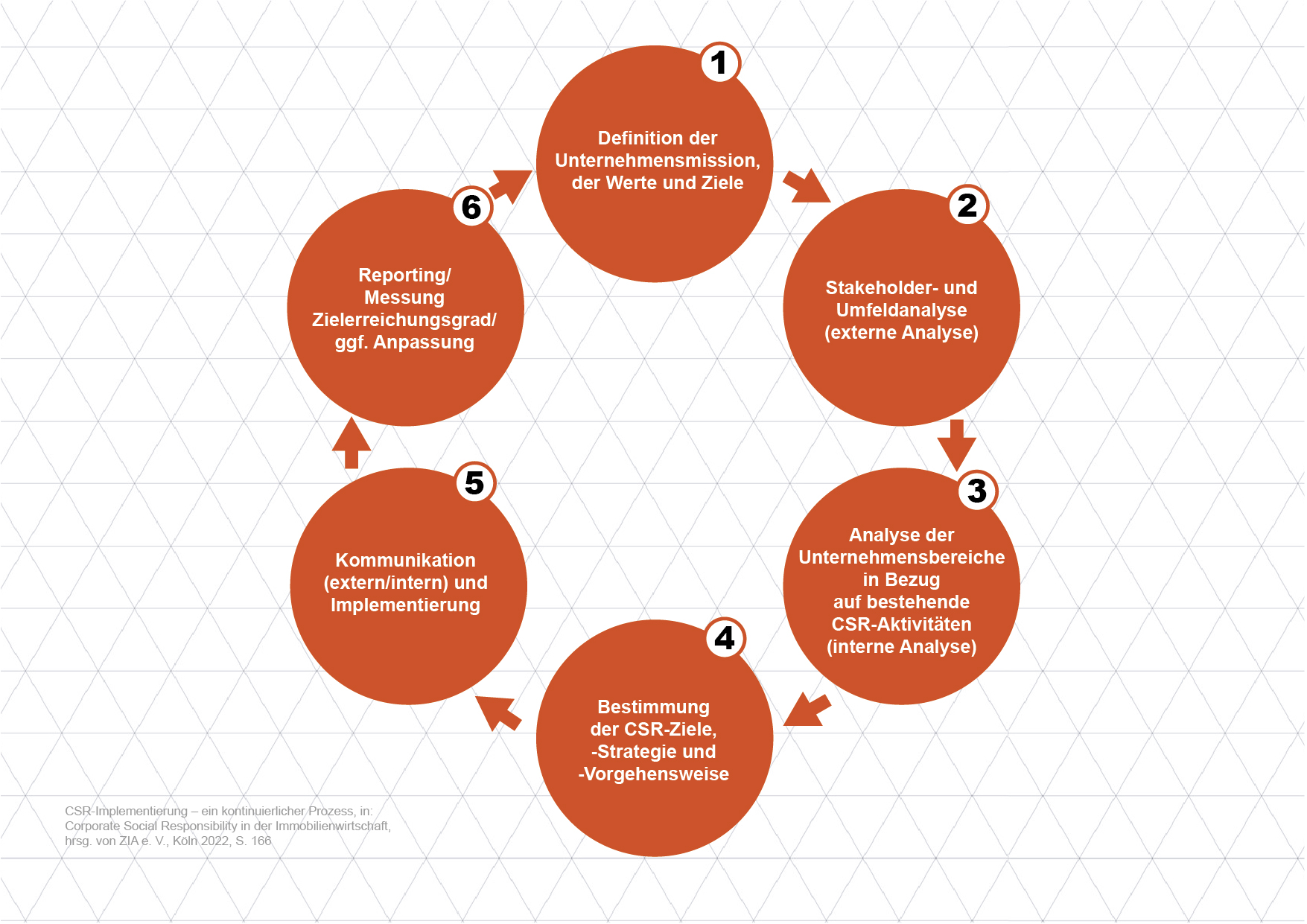Why must there be a change to a sustainable corporate culture?
We all feel that the world is currently undergoing major change: We have lived through a pandemic with its consequences for people, companies and the world of work. We have a war in Europe that is brutally showing us how fragile our economic and social systems are. The world order is shifting. The climate crisis is acute, but is only temporarily overshadowed by more acute crises. Artificial intelligence, robotics and big data will further accelerate technological change. And last but not least, a new Generation Z is entering our companies with different ideas about the world of work, the future and values, to which companies and entrepreneurs should have answers. If a company does not focus on the meaningfulness of what it does, it will be difficult to attract and retain good and motivated employees. Philosopher and bestselling author Richard David Precht put it in a nutshell during the New Work Experience conference in Hamburg at the end of June last year: "We are evolving from a society of work to a society of meaning."
Starting from the financial sector, the ESG approach to corporate governance has become increasingly established in this context. ESG stands for holistic sustainability management and is made up of the "E" for environmental (including resource conservation, water protection, protection of biodiversity), the "S" for social (including occupational health and safety) and the "G" for governance (including compliance with legal requirements, good corporate management). While the requirement for ESG compliance initially primarily affected companies in the financial sector, the "Corporate Social Responsibility Directive" adopted by the EU also brings companies that have no direct connection to the financial market directly into the legal sphere. Companies and their stakeholders that do not tackle the necessary changes ("it has always worked like this ...") will sooner or later face considerable problems, from customer acquisition to supply chains, financing and employee recruitment and retention.
The most important and at the same time most difficult step in the change process is the necessary change in values and culture. The first task here is to critically review the corporate value framework and reflect the change in the company's values. It must then be ensured that these values are actually lived and are not just a marketing tool. It goes without saying that this can only work if it is exemplified top down so that it can be lived and radiated bottom up. As a result, many managers and their management culture will have to take a critical look at themselves and probably change enormously
Special transformation pressure for the real estate industry?
Climate change and its consequences are also becoming increasingly noticeable in our regions. And the goal of climate neutrality by 2050, or for the Federal Republic of Germany by 2045, is approaching mercilessly. The real estate industry or people involved in real estate have a special responsibility. ETH Zurich has determined that the construction industry in Germany accounts for around 7% of jobs, generates around 10% of GDP, but is responsible for 50% of resource consumption, 53% of waste generation (by weight) and 40% of energy consumption and greenhouse gases. And last but not least, the construction industry is responsible for 70% of land use changes in Germany. In concrete figures, this means that 58 hectares of land are consumed every day. In terms of construction and energy technology, we have already achieved a great deal in recent decades and developed a good standard. But in Germany, for example, we have not managed to reduce the amount of space heating required per person in real terms. In addition, with CO2 emissions per person in Germany of around 10 tons per year, we are twice the global average of around 5 tons per year, and with the technological possibilities, we could actually be below the global average. Earth Overshoot Day 2023 for Germany will be May 4, 2023!
The above data shows that the construction and real estate industry has enormous leverage and therefore a great responsibility to improve and achieve the climate targets set by the EU and Germany. Market participants and ever-increasing sections of society are demanding that responsibility be taken, which will inevitably lead to a transformation of the real estate industry. EU regulation with the Taxonomy Regulation, Sustainable Finance Action Plan and the current Corporate Social Responsibility Directive (CSRD) acts as an additional external accelerator here. Against this backdrop, Stefanie Frensch, Chair of the ZIA's Corporate Social Responsibility Committee, emphasizes how important a company's general attitude is for a successful ESG transformation process:
"For many years, our aim as an association has been to support our members in the three dimensions of ESG in our various committees and to work with them to identify and develop the best solutions. Successful companies have long since incorporated this into their corporate DNA. Sustainability goes hand in hand with responsibility, a "long-term perspective" and sustainable profitability. It is also always about the attitude of the company itself. The challenges, especially now, are great. It is therefore important for success to anchor this attitude centrally in the corporate culture and to take every colleague with us on this journey."
Best practice for sustainable and successful management
Point 2 of 10 of the ZIA (German Property Federation) Sustainability Code for the real estate industry states: "The principles of sustainability are an integral part of the value systems, strategies and structures of our companies." All companies in the real estate industry should commit themselves to complying with this sustainability code. As a consequence, this means that many companies now have to embark on the path to a new (sustainable) corporate culture, even if companies and entrepreneurs are now asking themselves how far this should go? Can we still be economically successful at all? Does sustainable action contradict economic success? However, an ever-increasing number of sustainable companies are showing that sustainable action and economic success will be mutually dependent and not contradictory in the future! Here is a statement from Sebastian Schels, Managing Partner of Ratisbona Holding GmbH & Co. KG, who consciously describes himself as a responsible entrepreneur in his LinkedIN profile:
"For some years now, we have been proving that it is not only meaningful but also financially rewarding to declare responsibility the maxim of our actions. Companies that focus solely on profit will lose their social legitimacy. This is another reason why we have anchored sustainability at the core of our corporate strategy. In addition to the projects that have already been implemented sustainably, 150 employees in three countries stand as credible witnesses to how the principle of a double return on financial investment on the one hand and benefits for people, nature and society on the other can be brought to life. We create positive examples: With our 25 to 30 projects a year, we have an excellent opportunity, especially as a small owner-managed company, to achieve fast learning loops and create a large number of best practice examples in a short space of time. This allows us to lead the way and show how ESG can be implemented in practice - in projects and in our organization. With the power of entrepreneurial solutions, we can therefore succeed in transforming the task of the century into measurable success today and a positive handprint for future generations."
Successful transformation from the inside out
The above example shows that although motivation can be additionally fueled externally, the key driver for success is intrinsic motivation. However, the motivation and courage to really change, to really do business in a "grandchild-friendly" way and to really want to live a sustainable corporate and leadership culture are the biggest and most certain drivers for a successful transformation. This requires the company management to be 100% behind it and drive the issue forward. If this transformation towards a new corporate culture is successful, every single employee will radiate this from the inside outwards to their own company, to customers and to society. Success will not be long in coming. "Therefore, the successful implementation of sustainable corporate management requires that the concept of sustainability is holistically anchored throughout the entire organization - consequently, the company as a business entity with its managers, employees, suppliers, value chains, customers and employees is taken into account," says the ZIA (Zentraler Immobilien Ausschuss e. V.) in its publication "Corporate Social Responsibility in der Immobilienwirtschaft: (Corporate Social Responsibility in der Immobilienwirtschaft, published by ZIA e. V., Cologne 2022, p. 164).
The diagram above shows the different levels and directions of impact. As described above, pressure is exerted on companies and their employees from the outside. On the other hand, the companies and employees also have an internal impact on the outside and can thus carry the changes and measures implemented into society, the economy and, last but not least, towards a better environment. If the company positions itself correctly (sustainably), external pressure is not a burden, but rather an opportunity for positive impact and economic success. To understand the interaction between a company's organizational form and transformation dynamics, here are a few questions for the author of this article, Richard Weller, Managing Director of Alpha IC and responsible for Organization & Human Resources, CSR and Sustainability Management:
Richard, as Managing Director, you are responsible for HR, among other things. You have deliberately opted for an agile organizational structure. How should we imagine this?
We are an agile company with as few rigid rules and hierarchical levels as possible. At the heart of our living and learning organizational cosmos is a so-called "partner model". Our 80 or so employees at six different locations independently choose their manager from among nine partners who act as mentors and coaches. In addition, there are a number of specialist and non-disciplinary functions, such as leads and experts. They ensure optimal processes and workflows and the development of new products and services.
What is important when you lead in a cooperative manner and not top-down?
A high level of intrinsic motivation for our values is a prerequisite: Partnership, self-determination, sustainability and quality. This is associated with a high degree of personal responsibility on the part of everyone, combined with a high potential for self-determined development and design opportunities. Hybrid and flexible working was already standard at our six locations before coronavirus. In addition, with our nine service areas, we are used to thinking "outside the box" with our holistic approach.
How much commitment does such an agile "buddy" system need?
Especially in the current situation, in which we are growing very strongly, this type of management requires a continuous commitment to communication and transparency from all of us. That is why, in addition to the partner model, there are a number of regular event formats, such as so-called future dialogs, where we all discuss our values, our joint work, the rules of cooperation, challenges and develop proposed solutions. We want to work from the inside out, i.e. internalize and live our values ourselves so that we can communicate them convincingly to the outside world.
In your opinion, what are the advantages of such an agile organizational model with regard to the transformation to ESG compliance?
I think we are a particularly adaptive and socially competent team of colleagues with a high level of intrinsic motivation for what we do and how we do it; 85% of our orders are follow-up orders. Thanks to our own change experience, we not only have a high level of resilience as an agile organization, our organizational form definitely has a dynamic effect, especially in the transformation to an ESG-capable corporate culture.
Success factors for an inside-out transformation to an ESG-capable corporate culture
What does the roadmap to a sustainable corporate culture look like? Is there a simple recipe? The answer is NO! Every company is different, starts at a different point, has its own level of ambition and has different potential and goals.
The first step is therefore a serious process to determine where the company and its management currently stand and to work out what ambitions and goals exist. After all, in order to be perceived by customers, employees and society as a truly credible company that acts sustainably, the entrepreneurs and managers must really want it and be fully behind it so that everyone is on board.
There are a variety of approaches and models for the next steps, depending on how the company is structured and which preferred model - rigid or agile - is used by any external support involved. Here, for example, is a six-step circular process based on Schwerk:
There are a number of factors that are critical to the success of the transformation process, the most important of which are listed below:
- The management must want it and be fully behind it. It's a matter of attitude!
- All employees must be involved (turn those affected into participants!).
- The transformation process must be implemented stringently and must not be allowed to stall.
- The transformation to a new corporate and leadership culture is a long process that cannot be implemented in six months, i.e. patience and perseverance are required!
- Check whether it is possible on your own and, if necessary, involve external support (independence and no operational blindness!).
- Last but not least: honesty, openness, transparency and communication!!
Would you like to define your roadmap to a sustainable corporate culture? We are happy to be your companion. Get in touch with us: r.weller@alpha-ic.com
If you would like to read the other articles in the series, please click on the respective link:
- Teil: ESG in der Real Estate Praxis. Status Quo eines Transformationsprozesses
- Teil: ESG in der Real Estate Praxis. Perspektiven und Bedürfnisse der Akteure
- Teil: ESG in der Real Estate Praxis. Herausforderungen für das Development
- Teil: ESG in der Real Estate Praxis. TDD und ESG DD
- Teil: ESG in der Real Estate Praxis. Digitalisierungsbedarfe und ESG-Management
- Teil: ESG in der Real Estate Praxis. Funktionsweise und Zielsetzung von ESG-Ratings für Immobilien und Unternehmen








